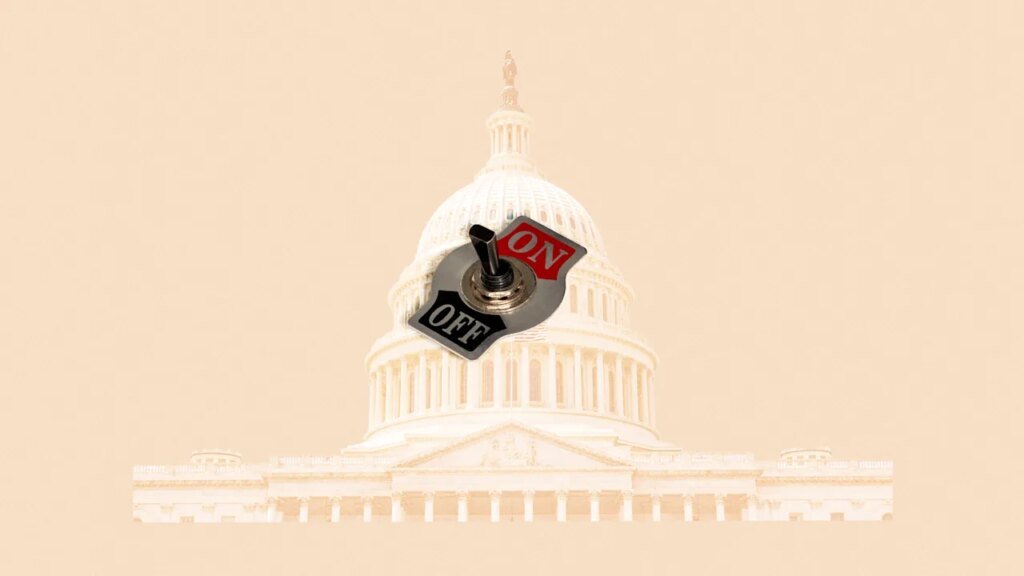When the federal government shutdown on October 1, it started a chain reaction of income problems for federal workers. Roughly 900,000 government employees are now on furlough. Another 700,000 are working without pay because their jobs are too critical for them to stay home.
To add insult to entirely preventable injury, the current administration has indicated that it may not provide the legally mandated back pay to these workers once the shutdown is over. Considering the fact that getting another job during the furlough may require the government employee’s agency approval (and wouldn’t help critical employees working without a paycheck), the shutdown could be a personal financial disaster for hundreds of thousands of Americans.
Only 1.8% of all American workers have Uncle Sam for a boss—but that doesn’t mean the other 98.2% of us are exempt from furloughs, sudden income loss, or bizarre grandstanding from unrelated departments that lead to you coming in to work for no pay for weeks on end. (Well, maybe not that last one.) That’s why it’s so important for all workers to know these financial strategies that can help you safely get to the other side of income loss:
Calculate your bare minimum budget
If you haven’t done so before your income loss, sit down and figure out your baseline monthly expenses. These are the expenditures that are essential for maintaining your life, such as rent or mortgage payment, utility bills, groceries, transportation, and childcare.
Generally, this is a relatively easy number to calculate. Start with your fixed expenses, like your rent and childcare, and estimate your fluctuating expenses like groceries and utility bills, by calculating the average cost over the past six to 12 months.
The number you come up with is your bare minimum monthly budget, and it gives you a framework for figuring out how to live sustainably while your income is paused.
Contact your creditors
If you are carrying credit card debt, student loans, or other debts, contact your creditors to find out if there are ways to pause payments or reduce your monthly payment requirements during the period of income loss.
While this will generally increase the amount you owe over time, it can give you the breathing room you need in the moment, and reduce your bare-minimum monthly budget number.
Determine if you’re eligible for unemployment
Furloughed government employees (as well as furloughed private sector workers) may be eligible for unemployment benefits, depending on local and state regulations.
Unemployment benefits are generally based on your past earning history and most benefits are limited to 26 weeks. Each state has a minimum and maximum weekly benefit amount for unemployment benefits.
For example, in Wisconsin, the minimum weekly unemployment benefit a Cheesehead could receive is $54 and the maximum is $370. These amounts vary greatly from state to state, with Massachusetts boasting the highest weekly maximum at $1,033 and Puerto Rico having the lowest maximum benefit at $190 per week.
Unemployment benefits are not available for all types of income loss. Going on strike, having to work without pay (as current excepted government workers are doing), or getting fired for cause would make you ineligible for unemployment benefits. But if you can collect unemployment, these benefits can help keep you afloat until your income resumes.
Compare your savings (or unemployment benefits) to your needs
Assuming you have savings set aside, you can compare it to your monthly minimum number to determine how many months you can afford to go without your income.
In an ideal world, you will have an emergency fund equal to three- to six-months’ worth of living expenses. That should help you feel more confident about your income loss, since you know you can weather quite a long period without it.
Unfortunately, only 46% of Americans have enough savings set aside to cover three months’ worth of expenses according to a 2025 Bankrate report. If you don’t have a robust savings account (or any at all), and you’re eligible for unemployment benefits, you can alternatively make the same type of comparison between your monthly minimum number and your potential unemployment checks.
Figure out alternative income sources
Depending on which agency they work for—and if they’re still clocking into a job they’re not getting paid for—federal employees may not be able to take on alternative employment while waiting out the shutdown. But that doesn’t mean they’re out of luck for finding other sources of income.
For example, a furloughed employee might make a list of things they’re willing to sell and create a schedule for selling them. Having a schedule gives them more time to get the best prices for those items and also provide a sense of security about where next month’s money will come from because there’s a plan in place.
Other options include renting out a room in your house or selling your services as a freelancer. Any options for keeping some money coming in while waiting for your primary income to resume can help relieve your financial stress during the shutdown.
Don’t let the shutdown keep you down
Losing your income through no fault of your own feels infuriating and demoralizing, especially if you have no idea when to expect its return. But calculating the minimum you need to maintain your lifestyle can help you feel more in control. From there, you can ask for some breathing room from your creditors and determine if you’re eligible for unemployment. Then look at how long your savings and unemployment benefits can sustain you.
To make sure the process can last as long as the current political temper tantrum, make a plan for alternative sources of income that you can implement as needed. All this together creates a blueprint for surviving and thriving through income loss, even if it stretches on for a long time.

